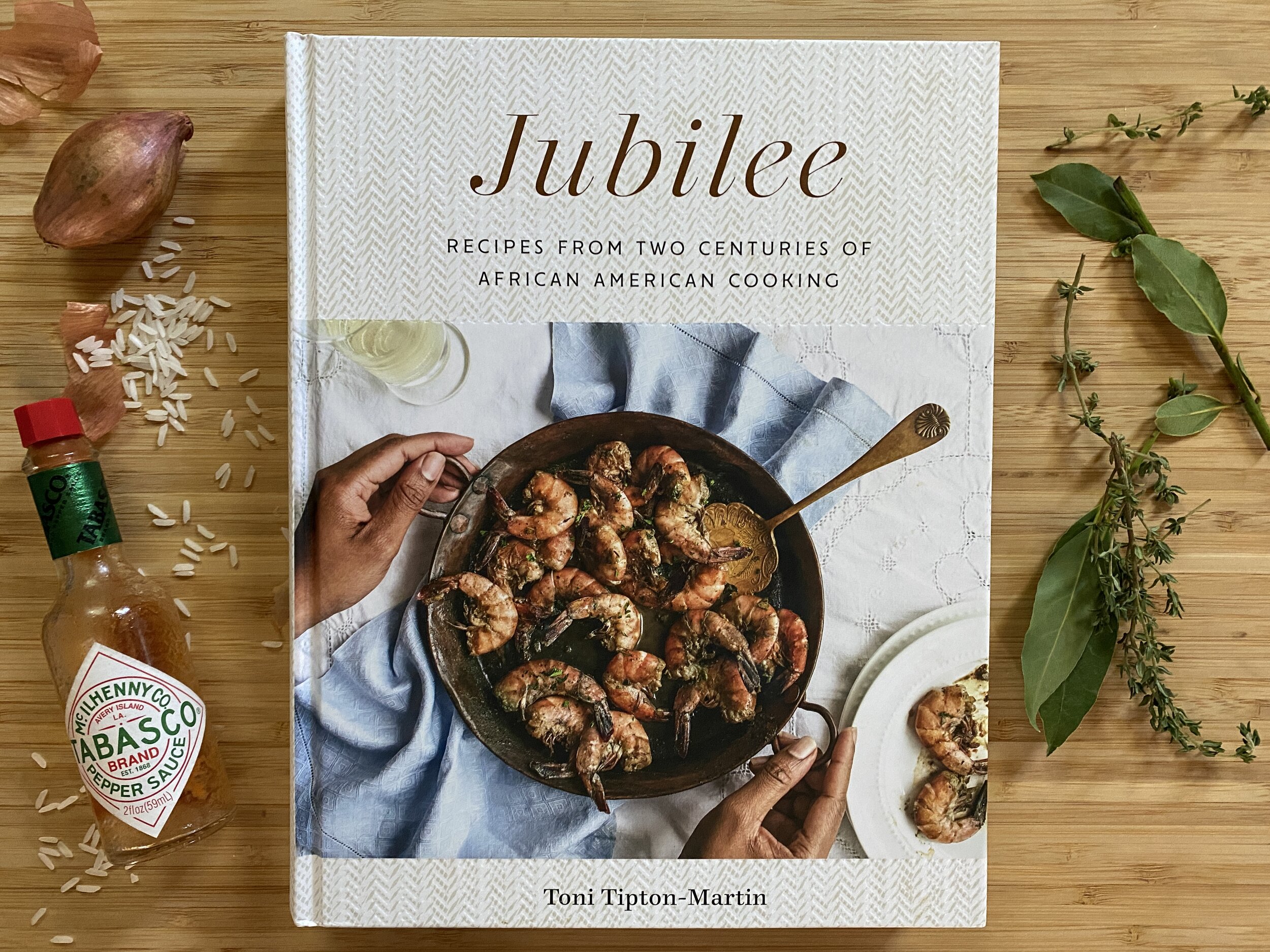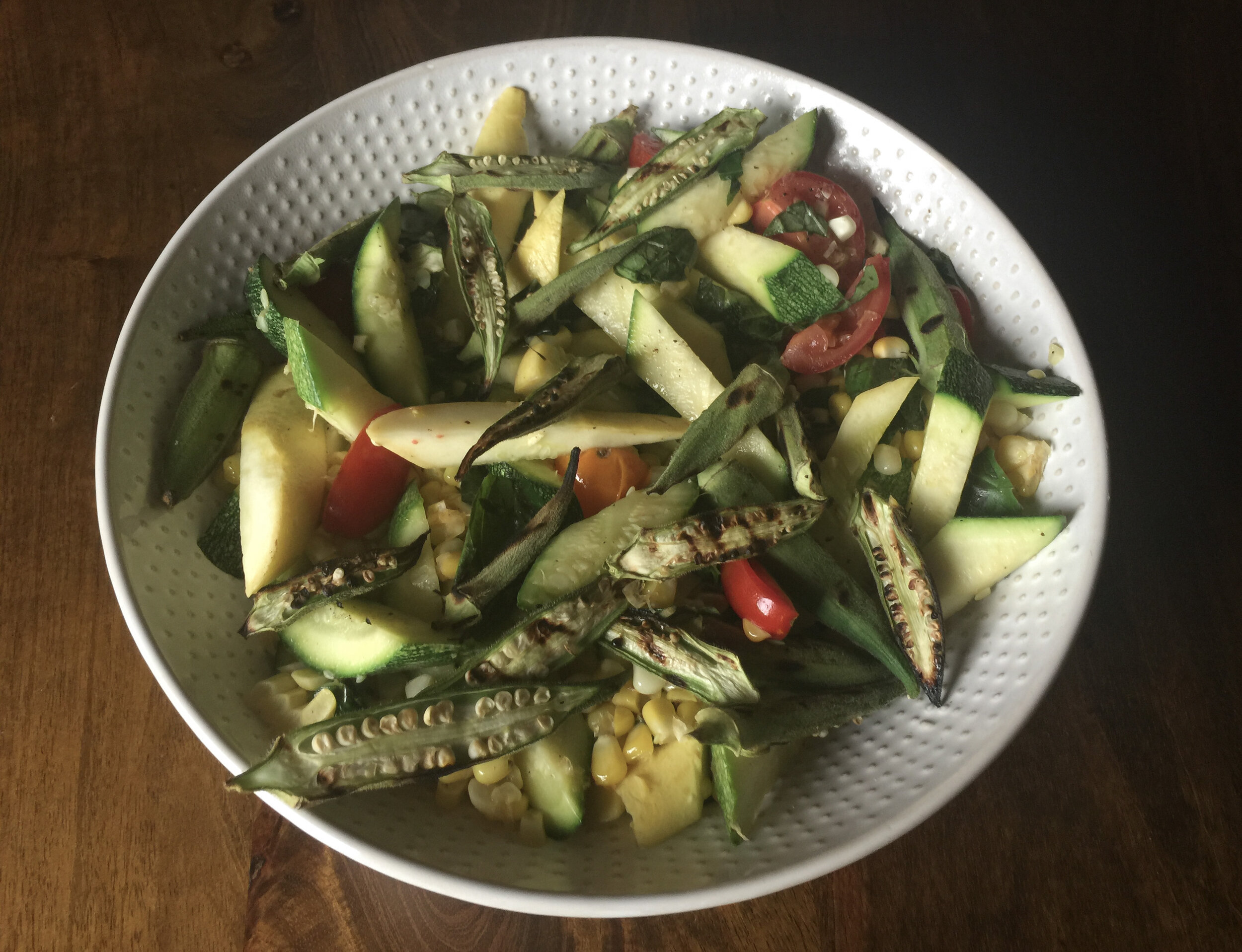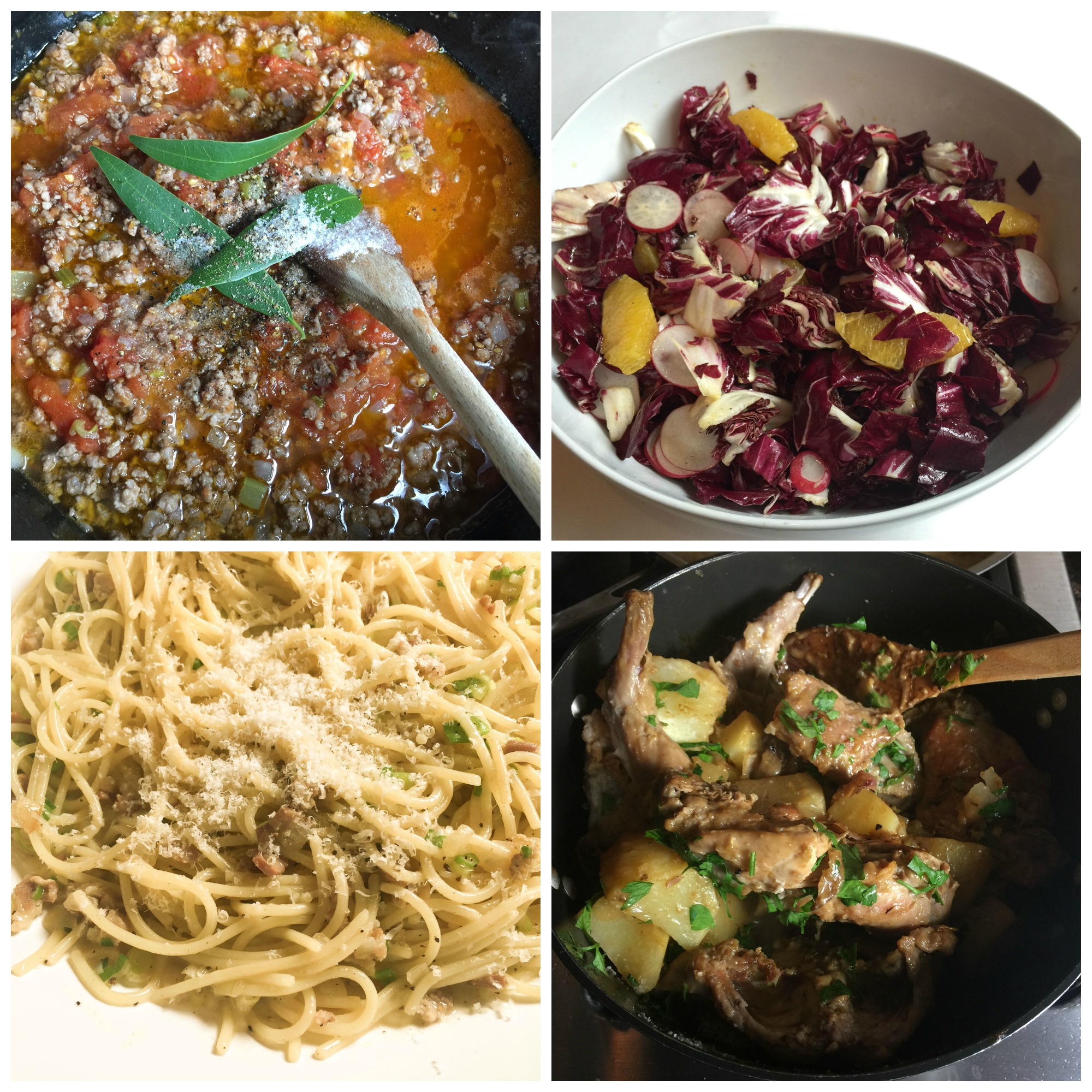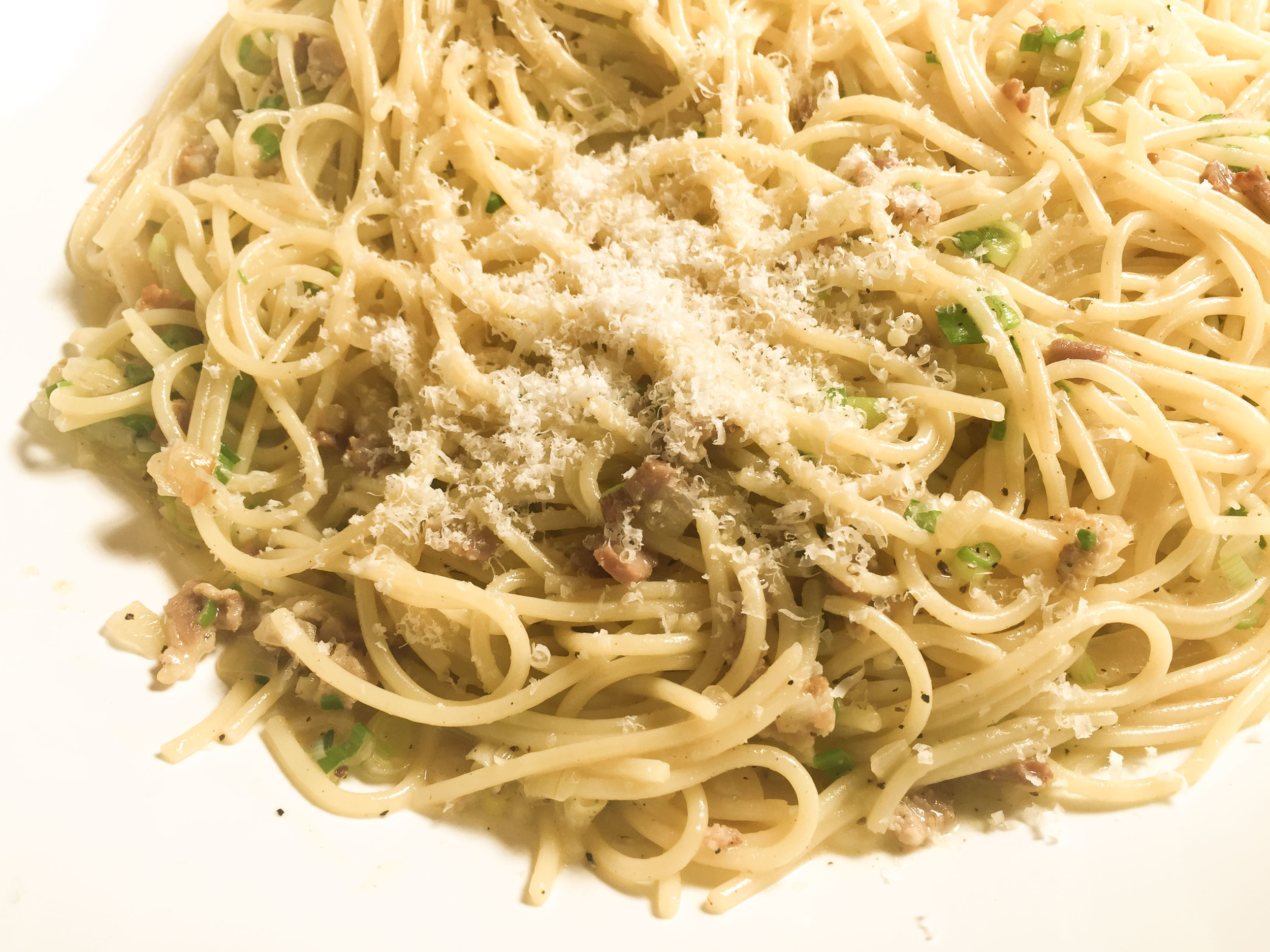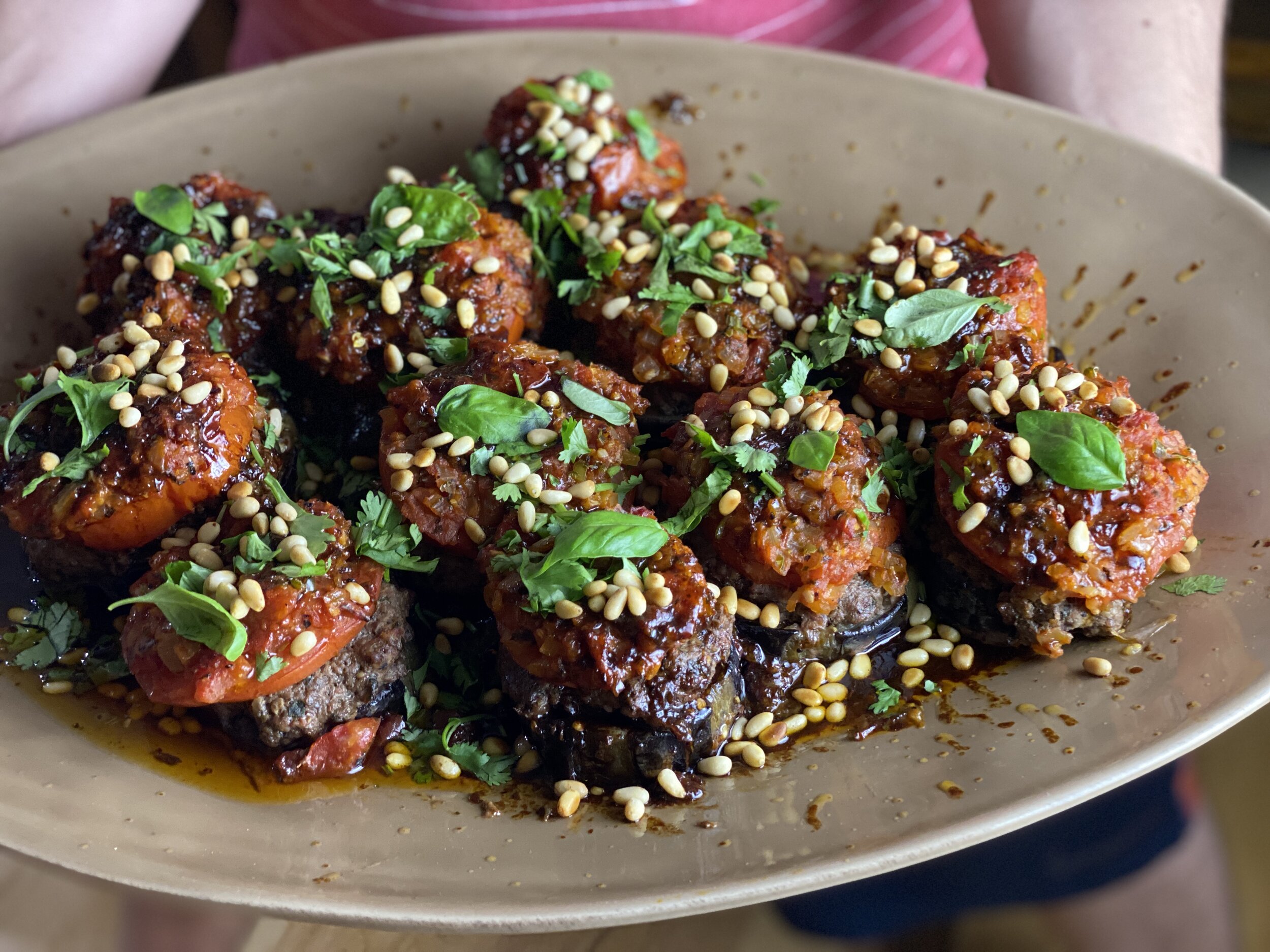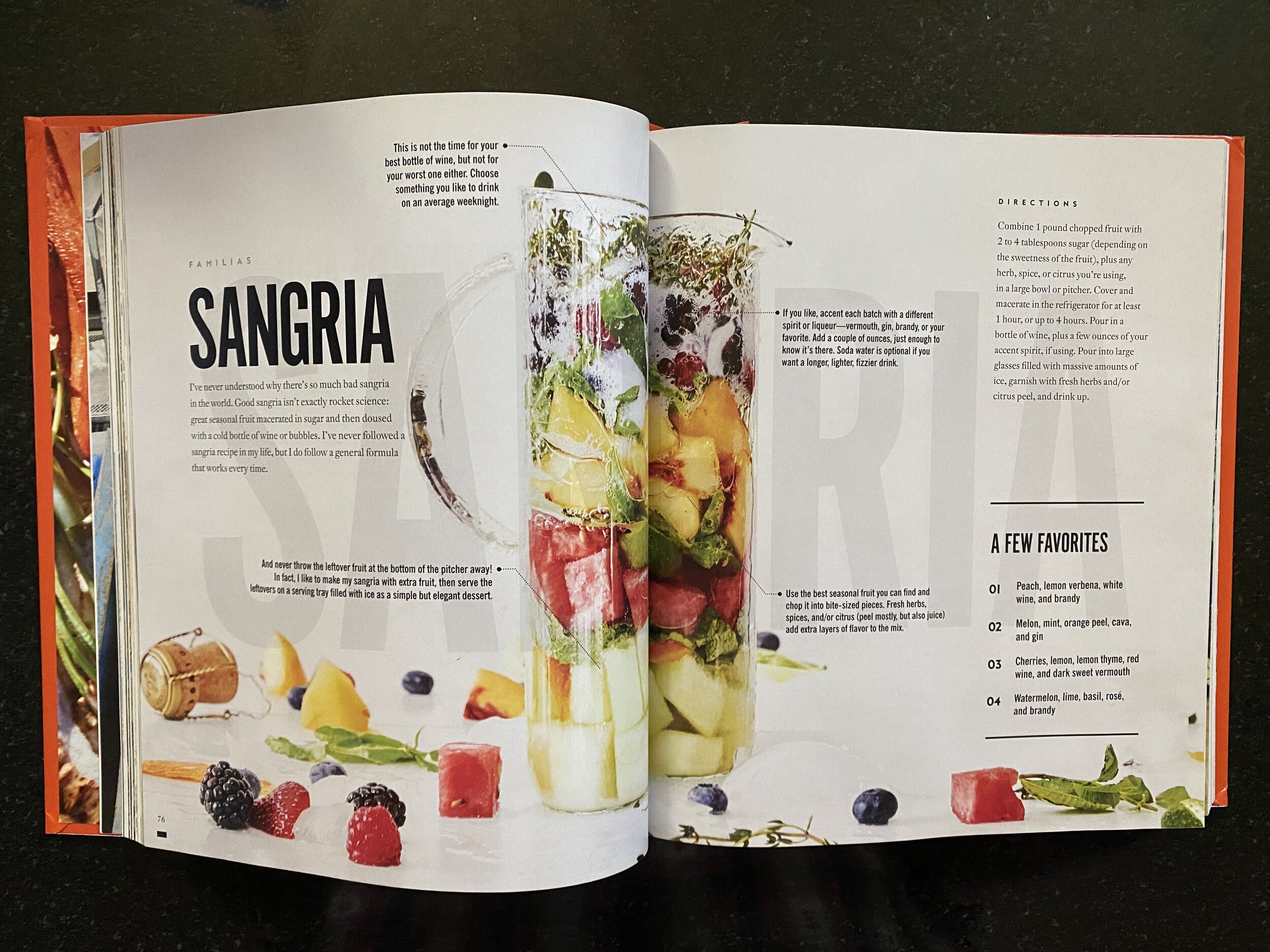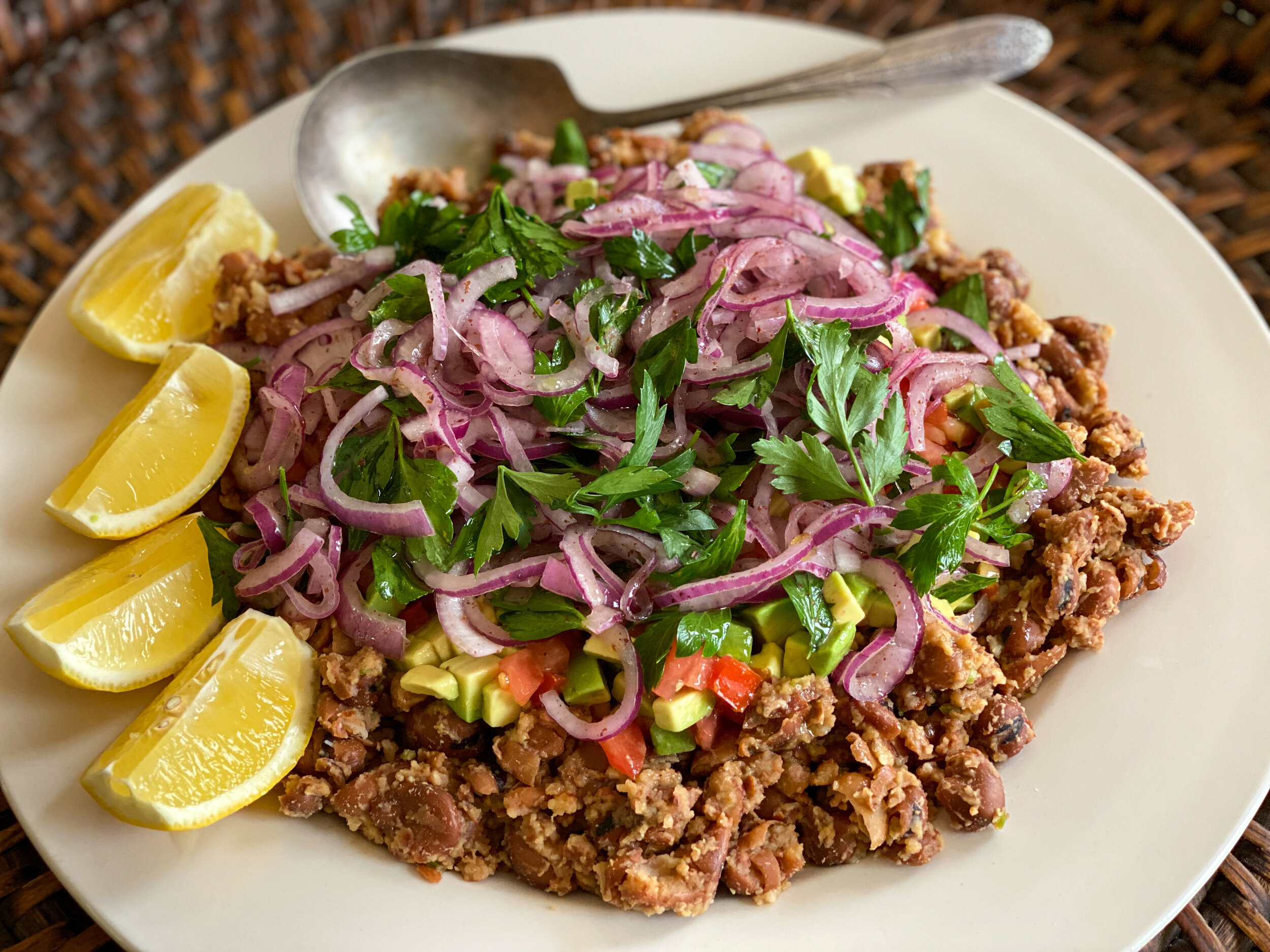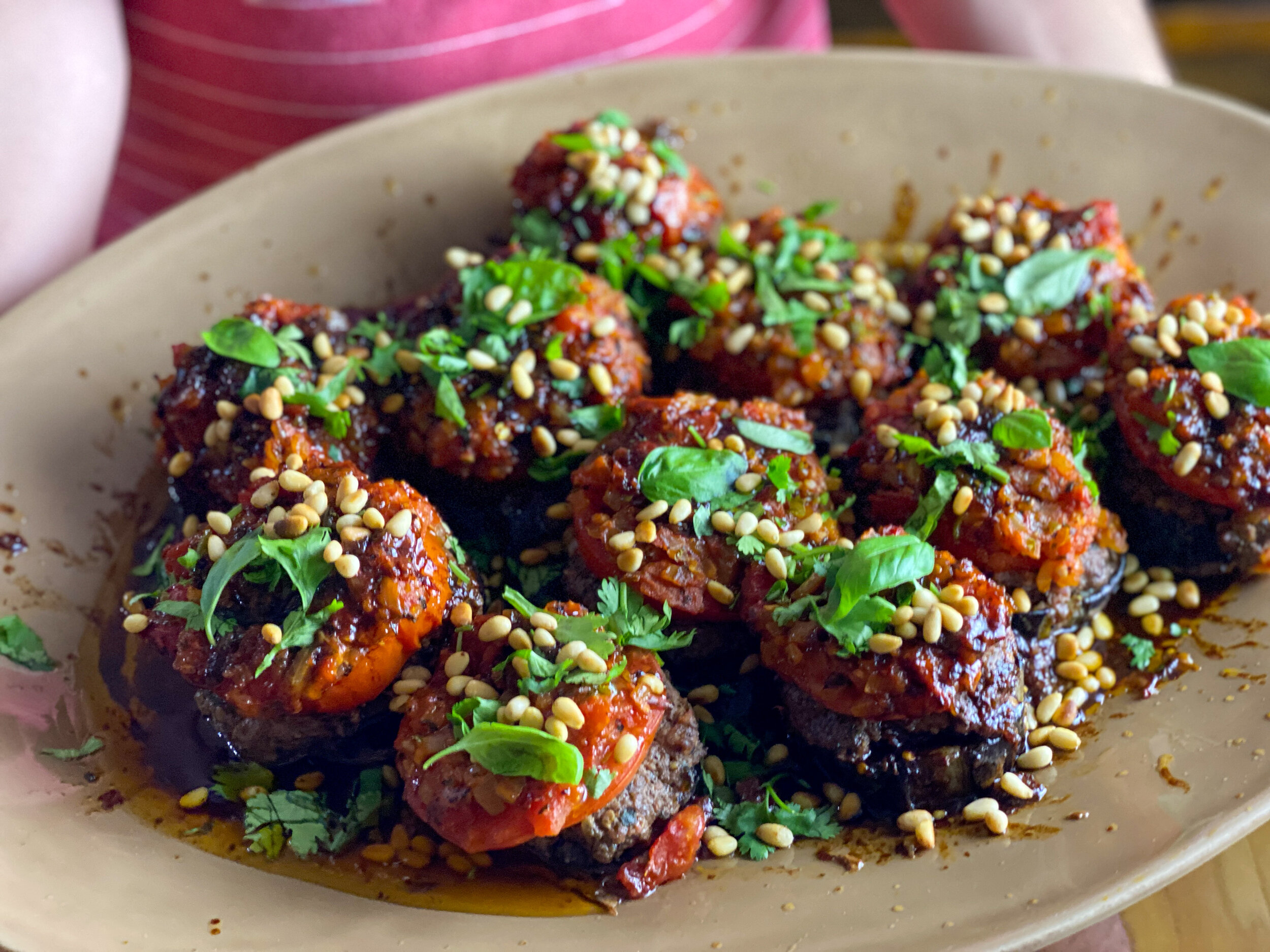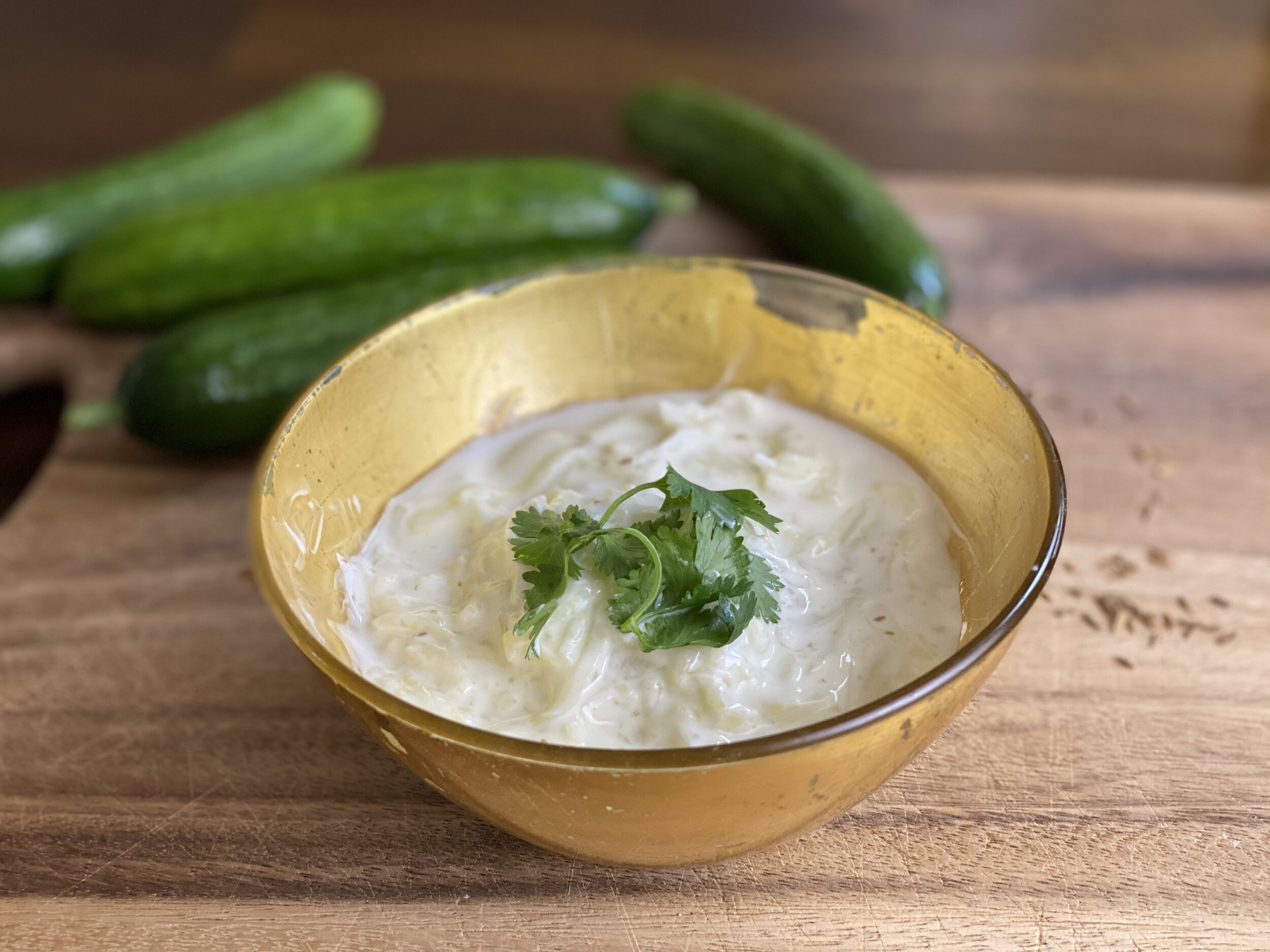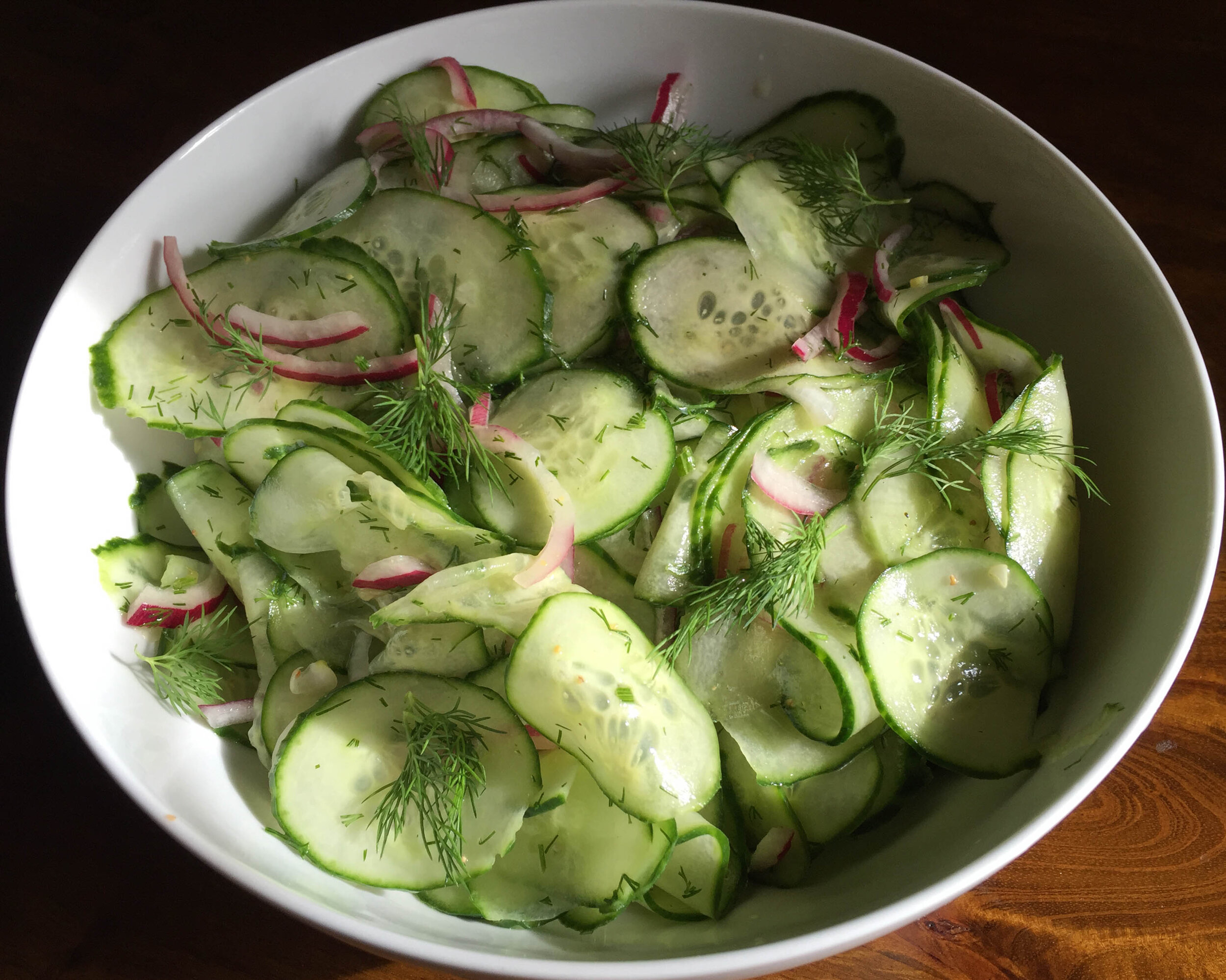At Cooks Without Borders, The Great Confinement has been a time for (among other things) deep dives into cookbooks — focusing mostly on volumes published within the last year, but also on cookbooks from a few years back that we hadn’t yet had a chance to explore.
The riches we’ve found in the pages of the best of them has been absolutely exhilarating, opening up entire new worlds to us.
Here are the first 5 of my 10 favorite dishes from the dozens of cookbook recipes I’ve tested and tasted over the last six months. What they have in common — besides their cravability factor — is that they are all really fun to cook.
Chicken Musakhan from Sami Tamimi’s ‘Falastin’
Traditionally during olive-oil pressing season to celebrate the freshly-pressed oil and served with pebble-textured taboon bread, the Palestinian dish known as Chicken Musakhan is now a year-round favorite in the Levant. “It’s a dish to eat with your hands and with your friends,” writes Sami Tamimi in Falastin,” served from one pot or plate, for everyone to then tear at some of the bread and spoon on the chicken and topping for themselves.” To make it, toss a whole quartered bird with plenty of cumin and sumac and other spices, then roast it and layer it on crisped pieces of torn pita with a lot of long-cooked, sumac-and-cumin-loaded sliced red onions, fried pine nuts and parsley. Spoon over with the roasting juices from the chicken, drizzle on more olive oil, dust with more sumac, and invite everyone to tear in. The dish is stunningly good.
Why we love cooking it: It’s liberating to use all those spices with such abandon.
We reviewed Falastin, which Tamimi wrote with Tara Wigley, in July.
Anjali Pathak’s Charred Baby Eggplants
These melty-soft baby eggplants with a coconutty, spicy filling come from Anjali Pathak’s 2015 book, The Indian Family Kitchen: Classic Dishes for a New Generation. Sizzled fresh curry leaves make it really special. We spotlighted this dish — finished with dabs of yogurt — in an an August story about eggplants.
Why we love cooking it: The topping is really fun to make, beginning with cooking the mustard seeds in oil till they jump out of the pan, and using the curry leaves (which freeze really well, so if you get your hands on some, buy extra).
Yangzhou Fried Rice from Fuchsia Dunlop’s ‘Every Grain of Rice’
Enticing, satisfying and fun to make, this Yangzhou Fried Rice from Dunlop’s superb 2012 book Every Grain of Rice: Simple Chinese Home Cooking is a dish is a highly craveable classic — one that I’d be happy to eat every week.
Why we love cooking it: Mastery! It’s an ideal recipe to use if you want to learn fried rice technique, as it’s the best (and least fussy) method we’ve found so far. After you try it once, there’s lots of room for ingredient improvisation. A seasoned wok is required.
Our review of the book is coming soon.
‘Jubilee’ Pickled Shrimp from Toni Tipton-Martin’s award-winning book
The pickled shrimp from Toni Tipton-Martin’s Jubilee: Recipes from Two Centuries of African American Cooking has been a point of joy for us several times during the pandemic, including last weekend, when a friend requested its presence at a socially distanced Labor Day picnic. It’s shown above before being pickled overnight. We reviewed the book in June 2020.
Why we love cooking it: The technique for pickling seafood in vinegar has its roots in Spanish escabeche. A recipe Tipton-Martin found in Savannah, Georgia inspired this one. Once you’ve made it once, you can play with the herbs and spices: This I upped the pickling spice a bit and added a bit more tarragon. Or even run with the basic escabeche idea and use what it’s taught us to pickled fin fish (snapper would be great) or scallops.
Rose, Cumin and Apricot Sablés from Camille Fourmont’s ‘La Buvette’
Crushed rosebuds and cumin bring a beautifully fragrant and savory aspect to Camille Fourmont’s spin on the classic French sablé cookie; dried apricots add a delightful chewy high note. Though Fourmont credits pastry superstar Pierre Hermé with having dreamt up the flavor combo, it is she who put them together in a sablé. Super buttery and tender, they are exquisite. We reviewed the book they’re from, La Buvette: Recipes and Wine Notes from Paris, in August.
Why we love cooking it: Playing with dried flower buds is a treat, and it’s always fun to slice and bake dough that’s been chilling in a log in the fridge.
RECIPE: Rose, Cumin and Apricot Sablés
RECIPE: ‘Jubilee’ Pickled Shrimp









